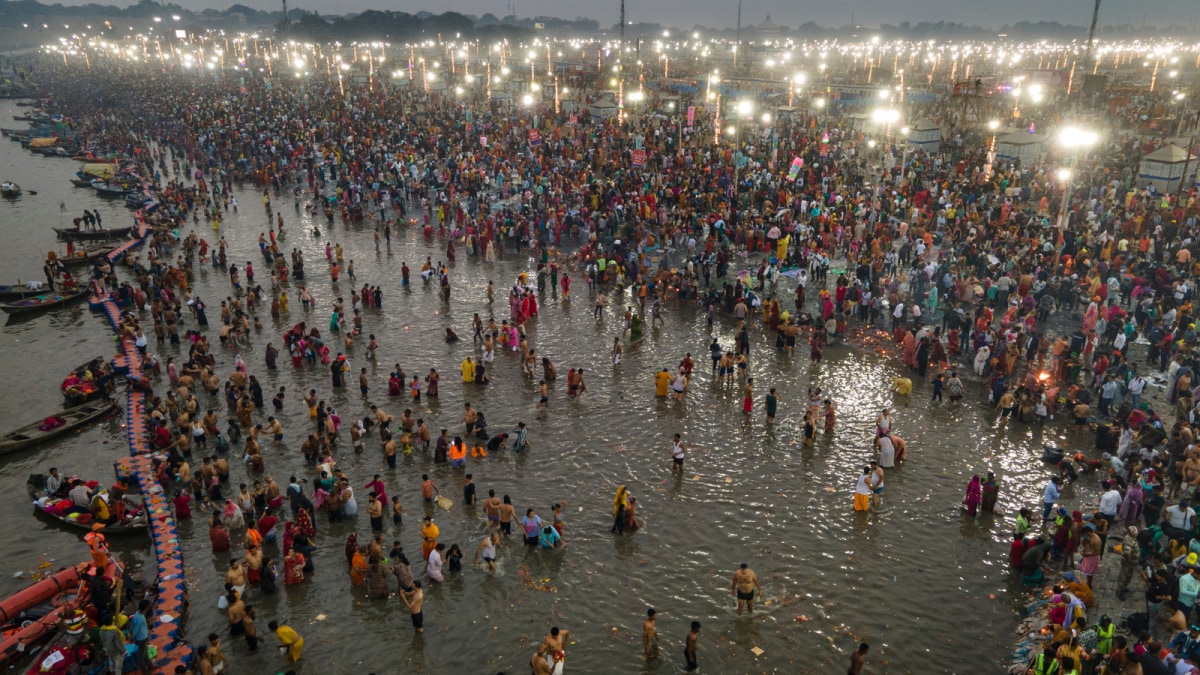 |
|
The Maha Kumbh, a massive religious gathering held in Prayagraj, Uttar Pradesh, has proven to be a significant economic driver for the region and beyond. The event, which ran from January 13th to February 26th, 2025, attracted an astounding 600 million devotees, far exceeding initial projections of 400 million. This influx of pilgrims generated an estimated ₹3 lakh crore (approximately US$360 billion) in revenue, transforming the Maha Kumbh into one of India's largest economic events. This figure surpasses earlier estimates of ₹2 lakh crore, highlighting the unexpectedly substantial economic impact of the pilgrimage.
The economic benefits were widespread, impacting numerous sectors. The tourism industry experienced a massive boom, with hotels, accommodations, and related services experiencing unprecedented demand. Food and beverage businesses saw a surge in sales, catering to the millions of visitors. Transportation and logistics played a crucial role, with increased demand for various modes of transport, facilitating the movement of pilgrims and goods. Businesses selling religious materials, clothing, and handicrafts also profited significantly from the event. Beyond these core sectors, the Maha Kumbh stimulated growth in healthcare, wellness services, media, and advertising. The entertainment industry also benefited, and there was increased demand for smart technologies, CCTV-telecom, and AI-based services, reflecting the modern technological integration within the event’s infrastructure.
The Uttar Pradesh government played a significant role in facilitating the economic success of the Maha Kumbh. A substantial investment of ₹7,500 crore was allocated to infrastructure development in Prayagraj and surrounding areas. This investment focused on improving roads, flyovers, and underpasses, aiming to manage the massive influx of pilgrims and ensure smooth traffic flow. A considerable portion, ₹1,500 crore, was specifically earmarked for direct Maha Kumbh arrangements. These infrastructural improvements not only enhanced the pilgrimage experience but also left a lasting legacy of improved civic amenities for the region, benefiting residents long after the event concluded. The positive spillover effects extended to nearby religious cities like Ayodhya and Varanasi, experiencing a significant boost in their local economies due to the increased tourism.
The success of the Maha Kumbh underscores the potent interplay between faith and economics. The event's massive economic impact demonstrates the significant potential of religious tourism to drive economic growth, particularly in regions with established religious significance. The substantial investment by the Uttar Pradesh government further highlights the strategic recognition of the economic benefits derived from effectively managing and promoting large-scale religious gatherings. The Maha Kumbh serves as a case study demonstrating how targeted infrastructure improvements and effective event management can translate into significant economic benefits for both local communities and the broader national economy. The event's success will likely inspire similar strategic investments in infrastructure and event management for future religious gatherings across India.
The Confederation of All India Traders (CAIT) played a crucial role in assessing the economic impact of the Maha Kumbh. Their analysis, which estimated the ₹3 lakh crore figure, provides valuable data to understand the scale of the economic activity generated. Their findings highlight not only the direct economic benefits but also the ripple effects on surrounding regions, underscoring the interconnectedness of local economies within the broader context of a large-scale religious event. The CAIT's involvement in measuring the economic impact offers crucial insights for policymakers, businesses, and event organizers, informing future strategies for maximizing the economic benefits of similar events. The data collected by CAIT serves as a valuable benchmark for future assessments of large-scale religious gatherings and their economic impact.
The comments from MP Praveen Khandelwal emphasize the strong connection between faith and the economy, a sentiment echoed in the overall success of the Maha Kumbh. His statement highlights the importance of acknowledging the economic contributions of religious events and the potential for these gatherings to drive significant economic growth. His observations underscore the importance of considering the economic potential of religious tourism and planning strategically to maximize its benefits. This perspective underscores the need for governments and organizations to recognize the economic value of faith-based tourism and to plan and invest accordingly, ensuring that future events generate similar positive outcomes.
Source: How Much Business Has Maha Kumbh Generated So Far? Big Boost For Ayodhya, Varanasi Too
